The green frog (Lithobates clamitans), native to North America, is a fascinating amphibian known for its distinctive croaking call and vibrant green coloration, which helps it blend into its leafy surroundings. Here are some interesting facts and reasons why green frogs are important:
Interesting Facts about Green Frogs:
- Distinctive Call: The green frog’s call is often compared to the sound of a plucked banjo string, which is unique and can be heard during their breeding season, typically from April to August.
- Sexual Dimorphism: Male green frogs are usually smaller than females and have a bright yellow throat, especially during the breeding season, which is used to attract mates.
- Habitat: These frogs are highly adaptable and can be found in a variety of freshwater habitats, including ponds, lakes, marshes, and streams. They prefer still or slow-moving water with abundant vegetation.
- Diet: Green frogs are opportunistic feeders with a diet consisting mainly of insects, but they also consume small invertebrates, crayfish, and even other smaller frogs. They play a crucial role in controlling insect populations.
- Metamorphosis: Green frogs undergo a fascinating metamorphosis from tadpoles to adult frogs. Tadpoles are herbivorous, feeding on algae and plant matter, while adults are carnivorous.
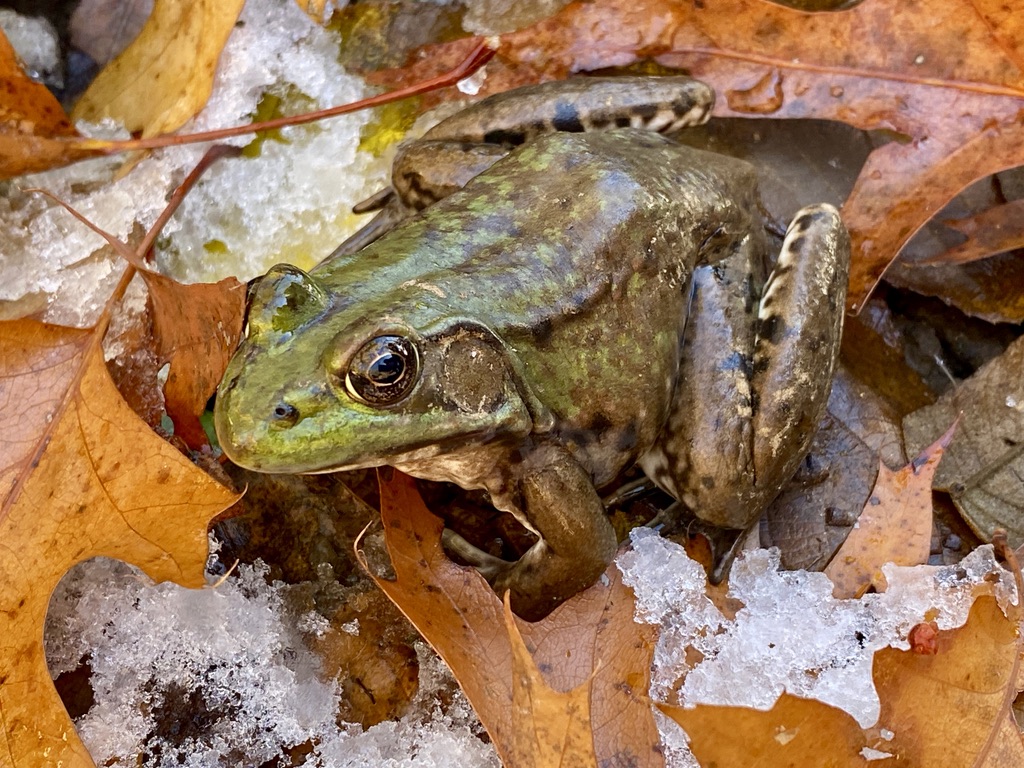
Importance of Green Frogs:
- Ecosystem Health Indicators: Frogs are considered bioindicators because they are highly sensitive to environmental changes and pollutants. The health of green frog populations can provide important information about the overall health of their ecosystems.
- Pest Control: By consuming large quantities of insects, green frogs help control pest populations, which can benefit agriculture and reduce the spread of insect-borne diseases.
- Food Web Contribution: Green frogs are an integral part of the food web. They serve as prey for a variety of predators, including birds, snakes, and larger mammals. This makes them essential for maintaining the balance within their ecosystems.
- Scientific Research: Green frogs are often used in scientific research due to their abundance and the ease with which they can be observed and studied. Research on green frogs contributes to our understanding of amphibian biology, ecology, and the impacts of environmental changes.
- Cultural and Educational Value: Frogs, including green frogs, are frequently featured in educational programs and media, helping to raise awareness about the importance of amphibians and the need for conservation efforts.
Green frogs are not only fascinating creatures with unique behaviors and characteristics, but they also play a vital role in maintaining healthy ecosystems. Their presence and health can signal the state of the environment, making them crucial for both natural balance and scientific study.
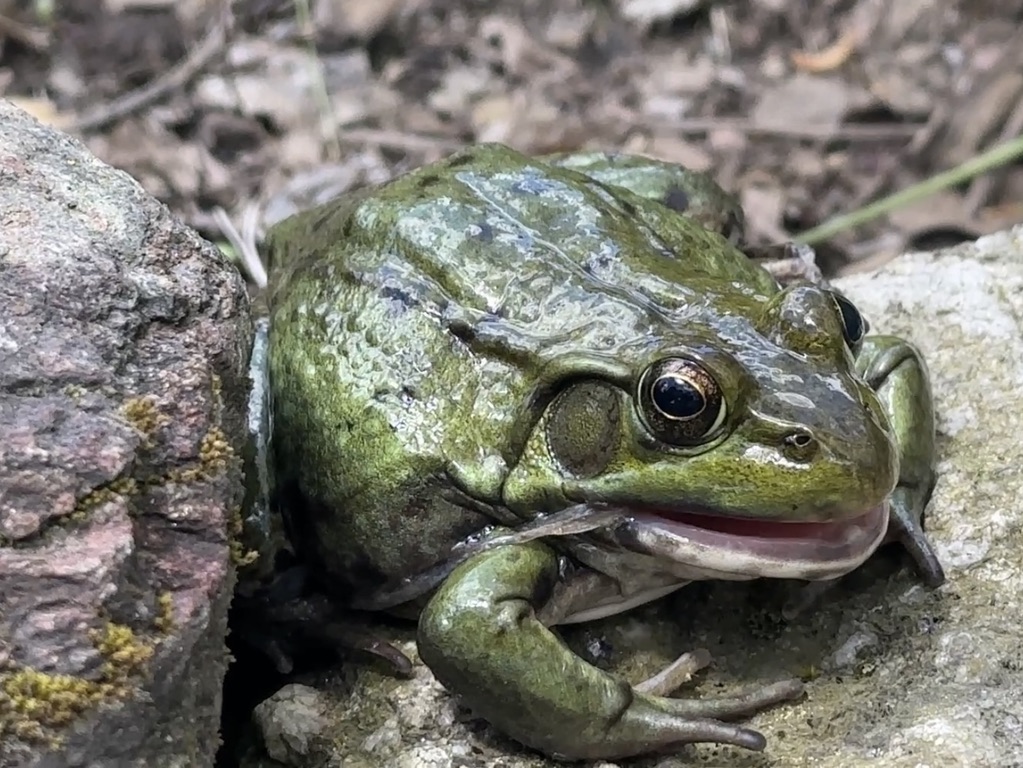
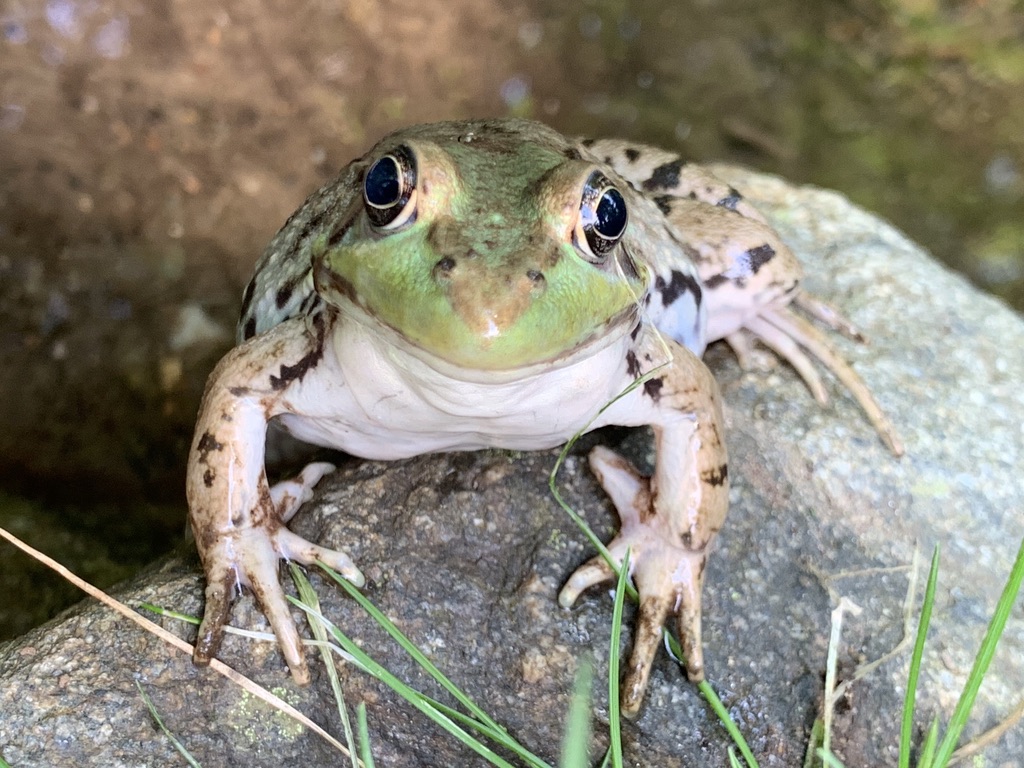
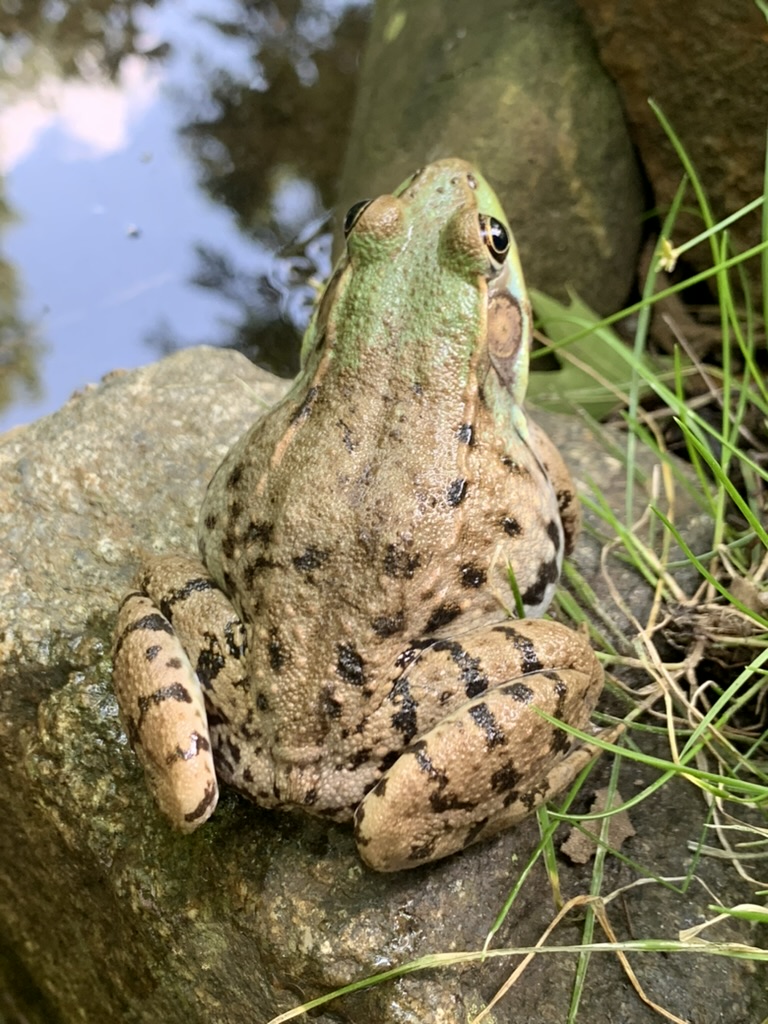
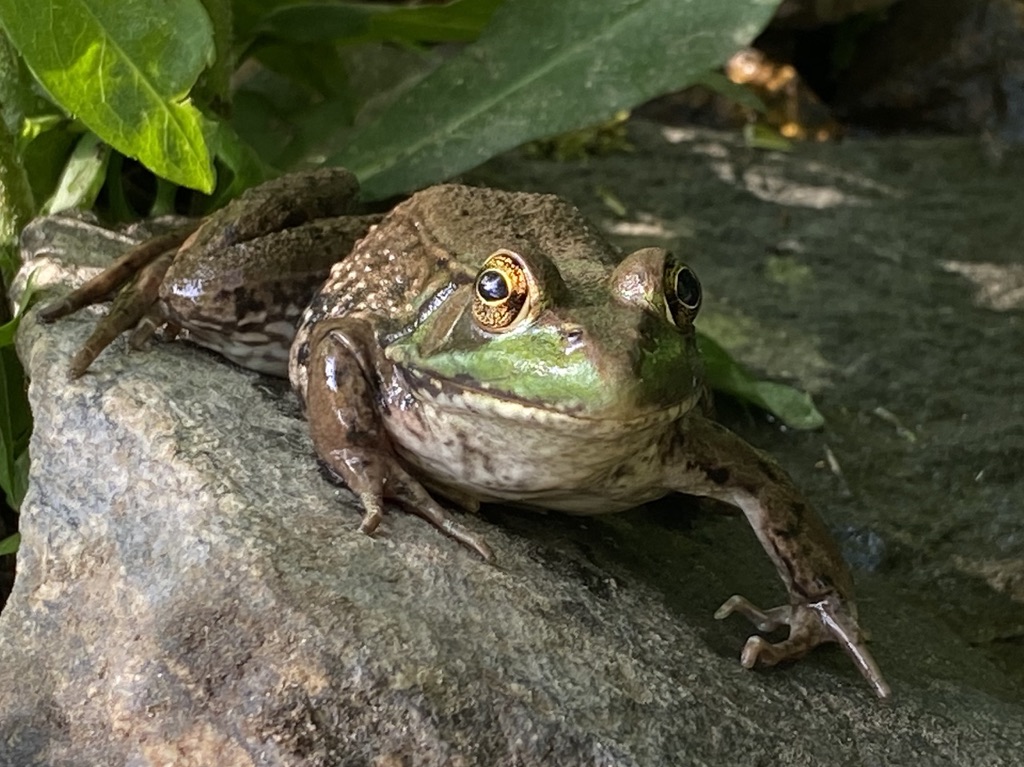
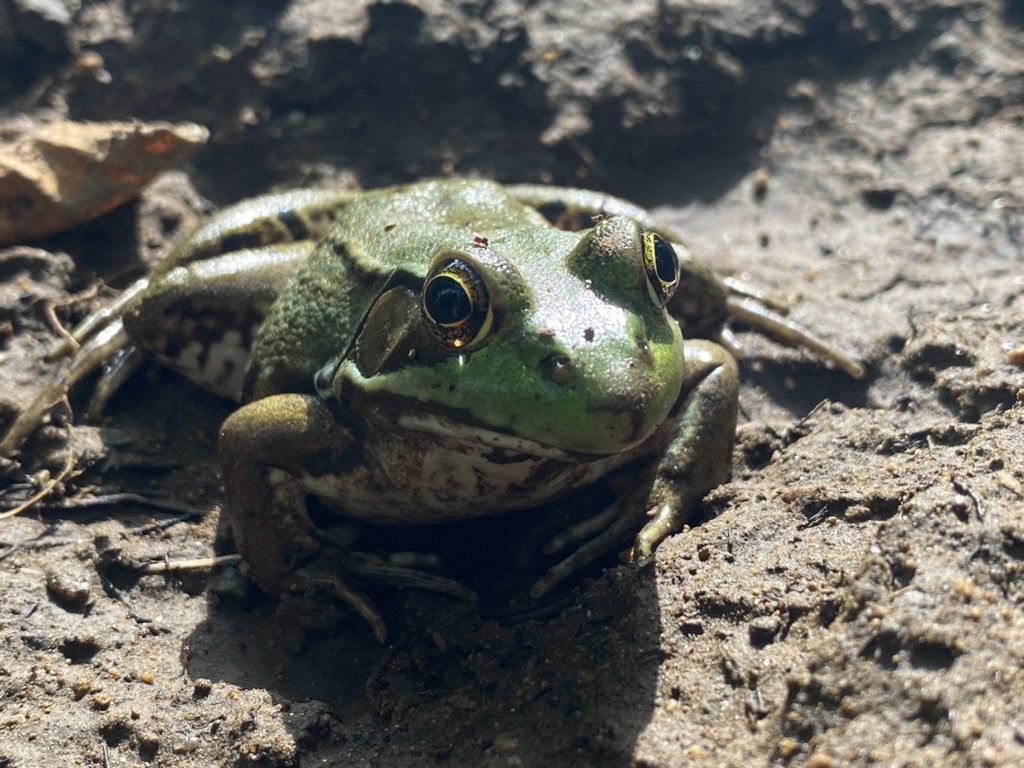
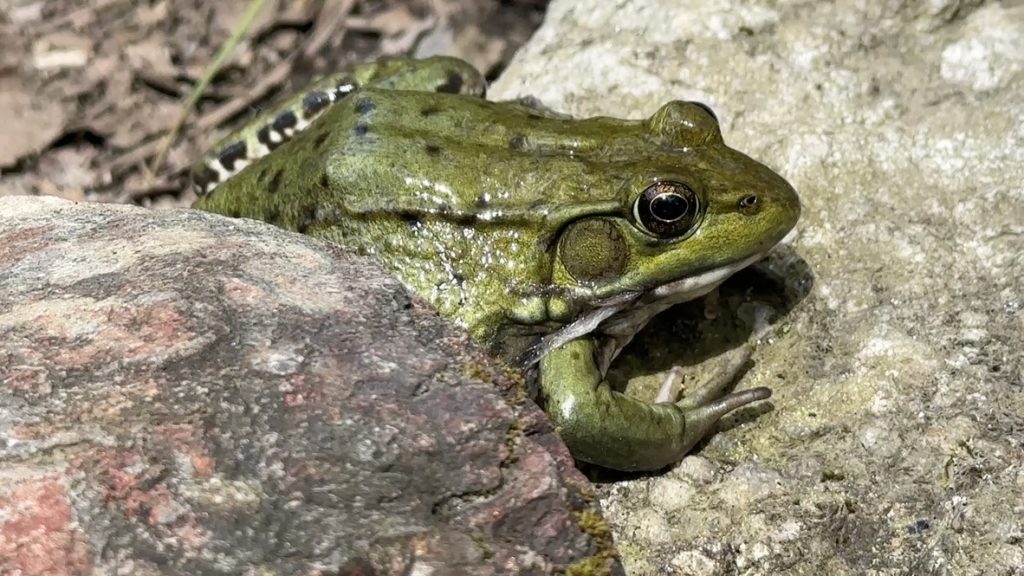
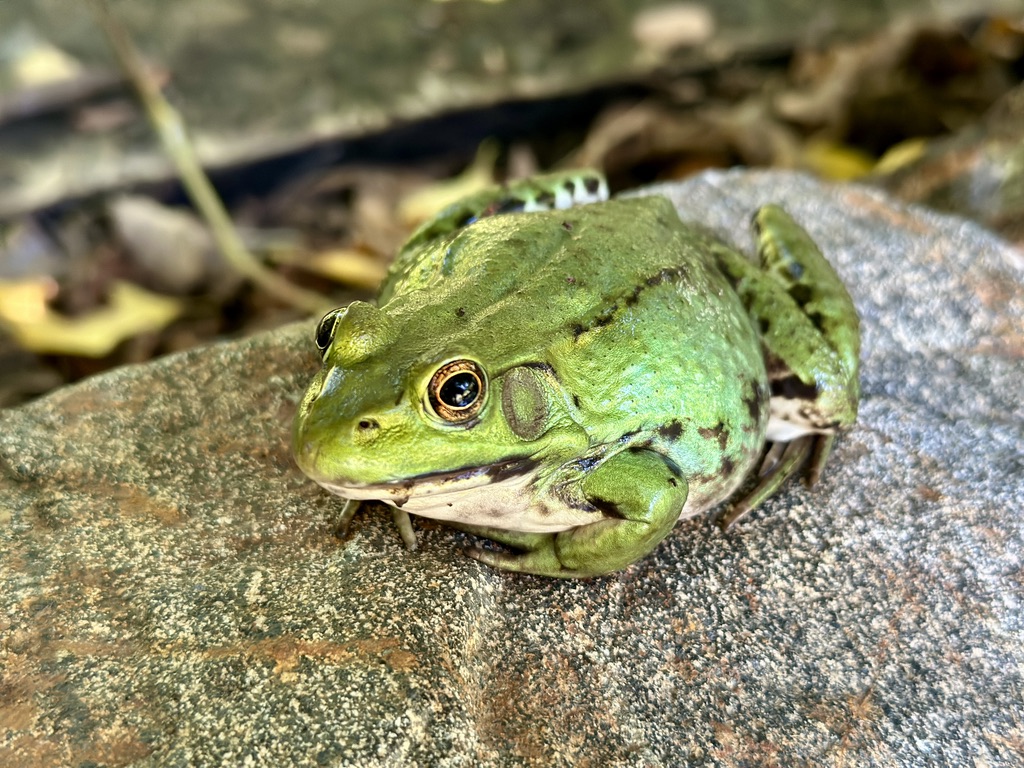
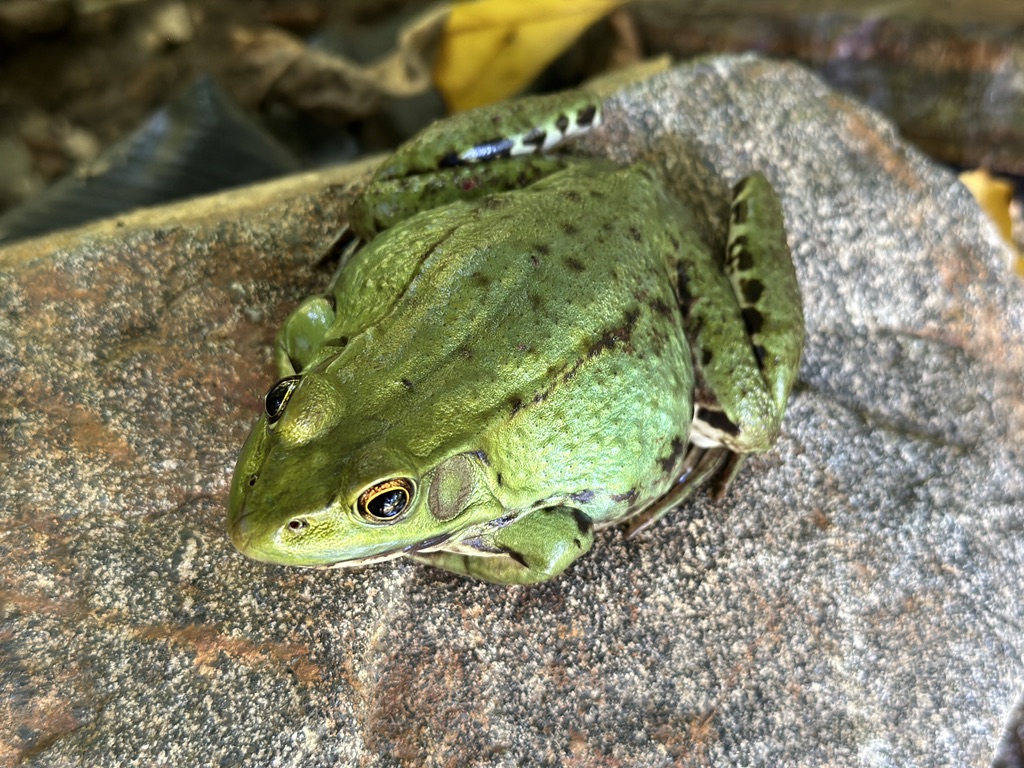
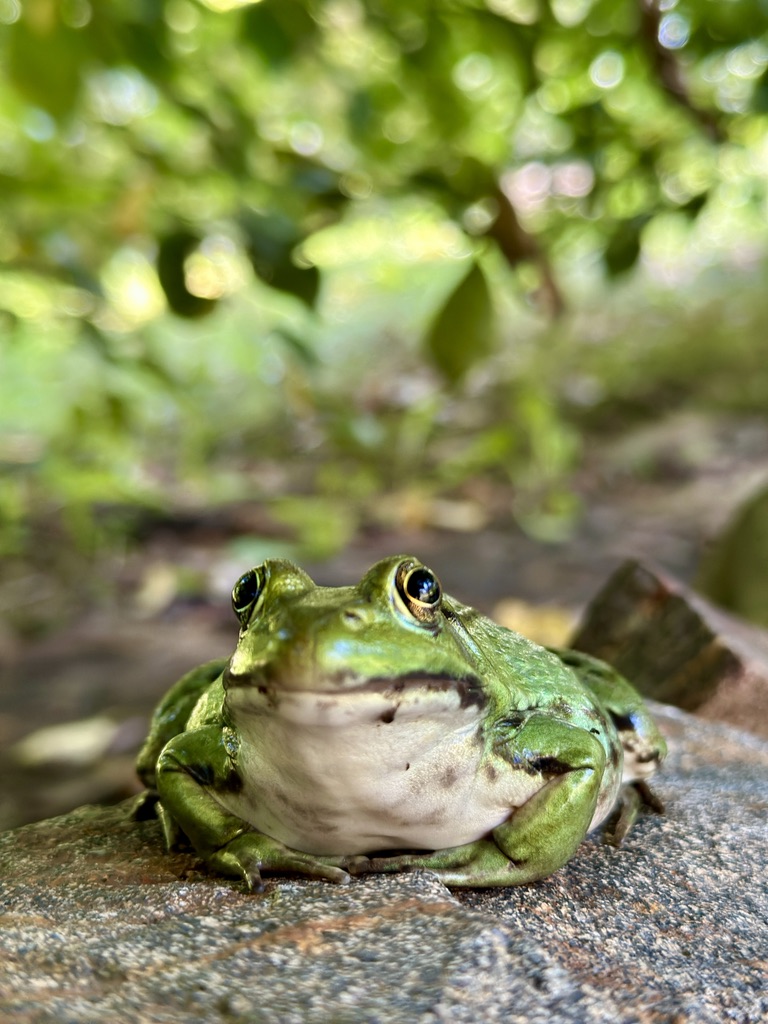
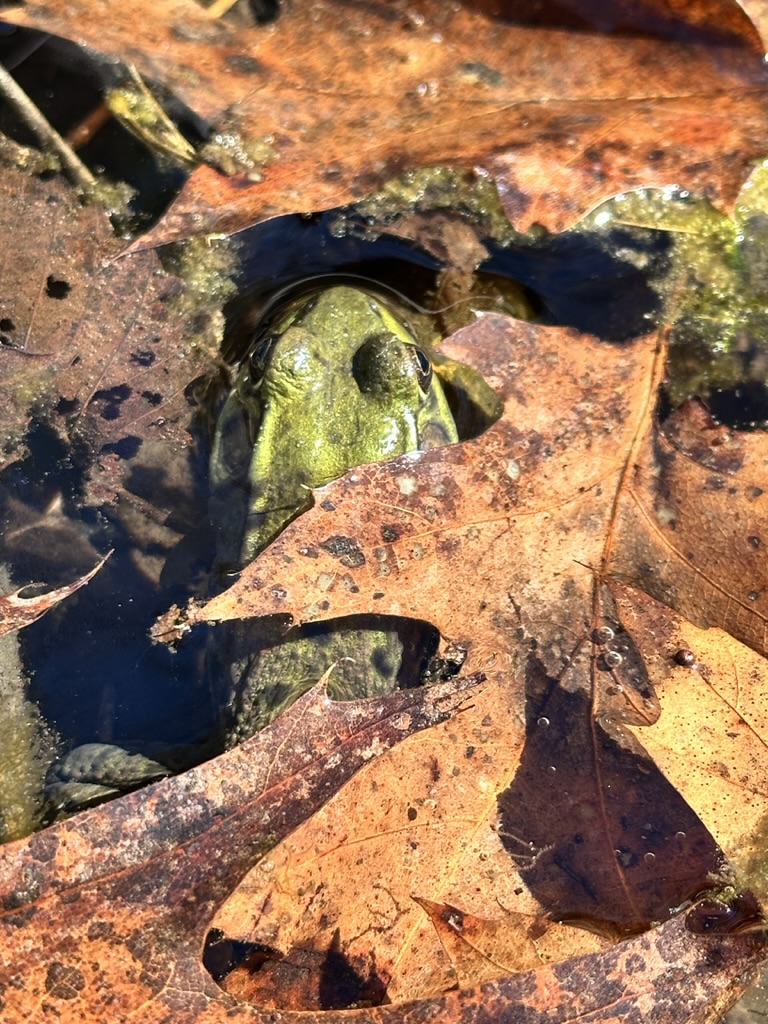
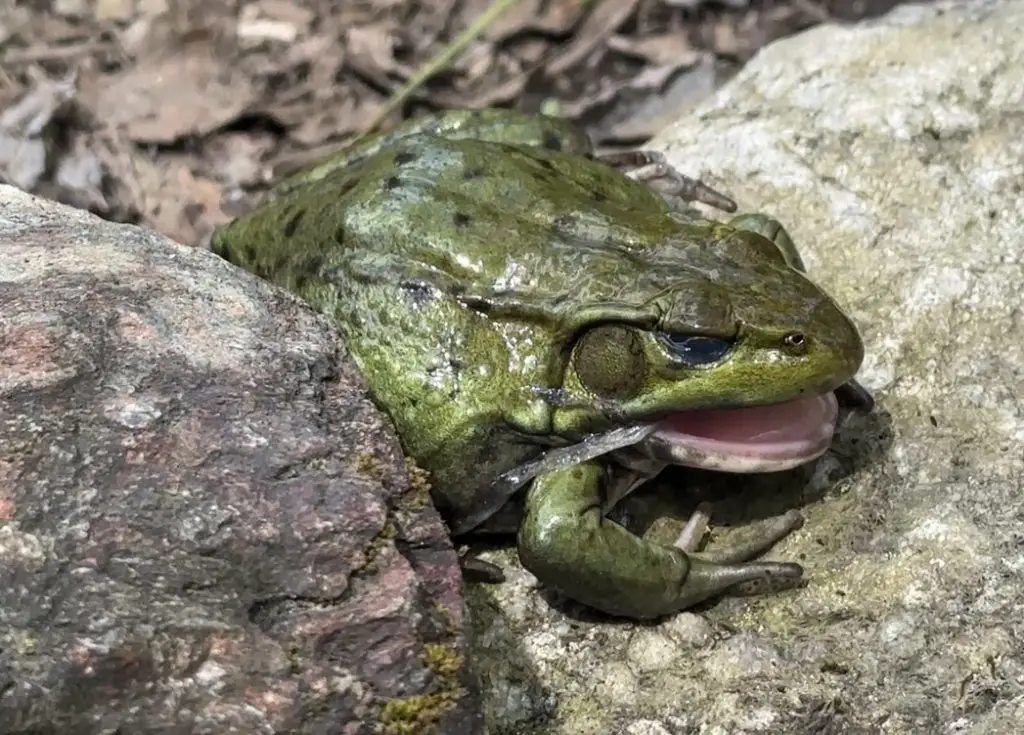
During winter, green frogs and leopard frogs (like many amphibians) adapt to survive the cold by entering a state of dormancy called hibernation. Their strategies for overwintering depend on their environment and natural instincts:
Hibernation Habits Aquatic Hibernation: Both green and leopard frogs typically hibernate in or near water, as they rely on it to keep their skin moist and facilitate oxygen absorption through their skin. They settle at the bottom of ponds, lakes, or slow-moving streams, where the water doesn’t freeze completely. Instead of burying themselves in mud (like some might assume), they rest on or slightly under the sediment, ensuring access to oxygen-rich water.
Terrestrial Hibernation: In some cases, particularly for leopard frogs, they may hibernate on land if they cannot find suitable water bodies. They burrow into leaf litter, soil, or under logs to stay insulated from freezing temperatures. However, this approach is riskier since they are more vulnerable to extreme cold.
Surviving Freezing Temperatures: Frogs are ectothermic (cold-blooded), so their body temperature mirrors their surroundings. In icy conditions, their metabolism slows dramatically. Remarkably, these frogs can tolerate partial freezing of their body fluids for short periods. Substances like glucose in their cells act as a natural antifreeze, preventing lethal ice crystal formation inside their cells.
Why Don’t They Suffocate? During hibernation, their breathing slows significantly, but they absorb oxygen through their skin while submerged in water. This allows them to remain dormant without needing to surface for air.
Spring Emergence: Once temperatures rise in spring, green and leopard frogs emerge from their hibernation spots. They become active again, seeking food and mates to prepare for the breeding season.
Hibernation is a fascinating survival strategy, allowing these frogs to endure harsh winters and thrive when warmer weather returns!
All photos were taken by a local photographer in Massachusetts. Copies are available for sale, and proceeds will help support green frog habitats. For more information, please contact Think@Difer.org
DIFER.ORG loves animals and supports efforts to save them



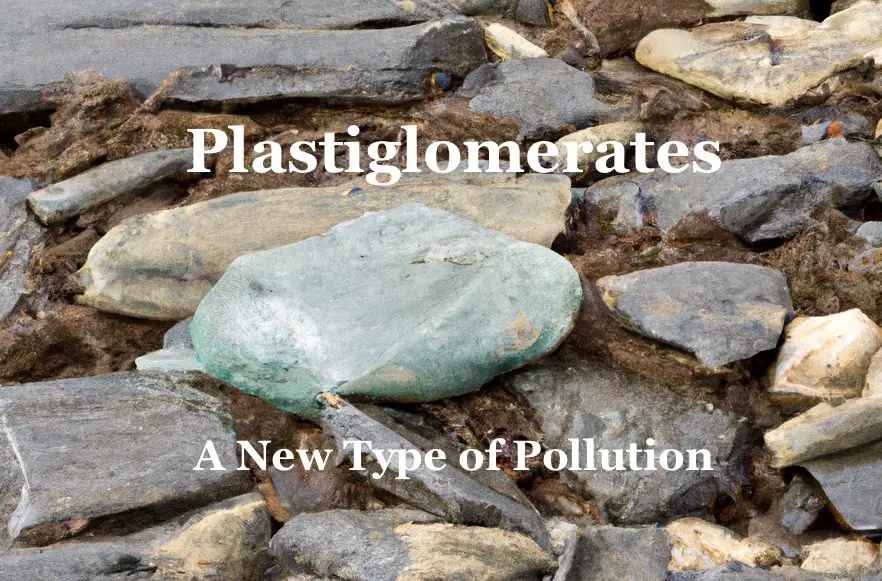
This is a fantastic example of how everything in an ecosystem is connected! The fact that green frogs are a bioindicator species is so important. Their skin is highly permeable, so they absorb pollutants and chemicals from the water and air directly into their bodies. A healthy population of green frogs means a healthy wetland.
When frog numbers decline, it’s a massive red flag that something is wrong with the water quality, pesticide runoff, or habitat health long before it might affect us directly. They’re like little, living alarm systems for the environment. Protecting their habitat isn’t just about saving frogs; it’s about safeguarding our own clean water and balanced ecosystems. Thanks for sharing this crucial bit of info! 🐸💚